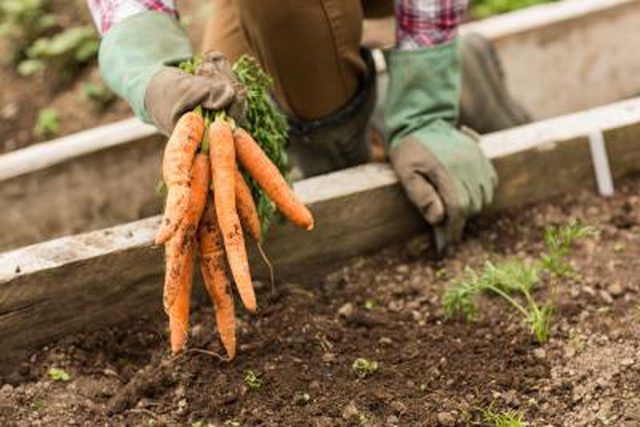Bulbs
Flower Basics
Flower Beds & Specialty Gardens
Flower Garden
Garden Furniture
Garden Gnomes
Garden Seeds
Garden Sheds
Garden Statues
Garden Tools & Supplies
Gardening Basics
Green & Organic
Groundcovers & Vines
Growing Annuals
Growing Basil
Growing Beans
Growing Berries
Growing Blueberries
Growing Cactus
Growing Corn
Growing Cotton
Growing Edibles
Growing Flowers
Growing Garlic
Growing Grapes
Growing Grass
Growing Herbs
Growing Jasmine
Growing Mint
Growing Mushrooms
Orchids
Growing Peanuts
Growing Perennials
Growing Plants
Growing Rosemary
Growing Roses
Growing Strawberries
Growing Sunflowers
Growing Thyme
Growing Tomatoes
Growing Tulips
Growing Vegetables
Herb Basics
Herb Garden
Indoor Growing
Landscaping Basics
Landscaping Patios
Landscaping Plants
Landscaping Shrubs
Landscaping Trees
Landscaping Walks & Pathways
Lawn Basics
Lawn Maintenance
Lawn Mowers
Lawn Ornaments
Lawn Planting
Lawn Tools
Outdoor Growing
Overall Landscape Planning
Pests, Weeds & Problems
Plant Basics
Rock Garden
Rose Garden
Shrubs
Soil
Specialty Gardens
Trees
Vegetable Garden
Yard Maintenance
How to Properly Use Newspaper Mulch
How to Properly Use Newspaper Mulch. Newspaper mulch is effective for controlling weeds and keeping soil moist, providing it's chopped or shredded, or in layers of two or three sheets. Using newspapers in the garden as a mulch is a useful way of recycling old newspapers, but not all ways of using newspaper mulches are good for the soil or your...

Newspaper mulch is effective for controlling weeds and keeping soil moist, providing it's chopped or shredded, or in layers of two or three sheets. Using newspapers in the garden as a mulch is a useful way of recycling old newspapers, but not all ways of using newspaper mulches are good for the soil or your plants. One concern is that newspapers contain toxic inks that could damage the soil or be absorbed into vegetables, but newspaper ink is usually soy-based and harmless. Don't use glossy sheets, which might contain heavy metals. Newspaper mulch doesn't work well when many sheets are used, creating thick layers.
Chopped or Shredded
Chopped or shredded newspaper is an effective mulch between rows of vegetables. Newspaper mulch insulates the ground and slightly lowers the soil temperature, so wait until the soil temperature has reached at 73 degrees Fahrenheit or higher before spreading chopped or shredded newspaper on your vegetable patch. The plants should also be at least 5 inches tall to prevent the mulch from covering them. Spread a 4- to 5-inch-deep layer of newspaper mulch between crop rows. To cover 100 square feet, you'll need 50 to 60 pounds of newspaper. Chopped or shredded newspaper compacts and decays over time, so check the mulch every two or three weeks and top it up as necessary. If you plan on fertilizing your crop, apply the fertilizer before spreading the mulch. Your local county waste management department might supply ready-chopped newspaper, or you can shred your own at home by tearing it into strips.
Thin Layers
A thin layer of newspaper topped with grass clippings is an attractive mulch in annual flower beds and vegetable patches. Grass clippings improve the look of newspaper sheets, hold them in place on windy days and help prevent the paper from drying out. Spread the newspaper mulch 2 sheets thick, overlapping the sheets, and cover them immediately with a 1/4-inch layer of grass clippings. The grass clippings should not be from a lawn treated with herbicides or other pesticides in the previous month. At the end of the growing season, mix the remains of the mulch into the soil with a garden fork.
Lasagna Composting
A newspaper mulch works well as part of lasagna composting. A method for creating a rich, moist growing bed, lasagna composting is named for the layers of different composting materials. A layer of newspaper or cardboard mulch lies at the base of the bed to help prevent weeds from growing through. To use newspaper in a lasagna composting bed, mow or cut the grass or other vegetation in the desired bed area, and spread four to six overlapping layers of newspaper. Soak the newspaper in water, and cover it with a 1-inch layer of composted manure, cottonseed meal, vegetable scraps or another high-nitrogen material. The third layer consists of high-carbon materials, such as straw, peat moss and corn stalks, and should be about 1 inch thick. Repeat the nitrogen- and carbon-rich layers until the desired height of bed is reached -- usually 18 inches to 36 inches. Spread a carbon-rich layer as the final layer. You can continue to add layers, or leave the bed to compost. A lasagna bed is ready for planting when it resembles fresh earth, which usually takes about six months.
Problems With Newspaper Mulch
Newspaper mulches can create poor growing conditions and become homes for pests. In poorly drained soils, thick layers of newspaper become compacted and prevent oxygen from reaching the soil, creating conditions harmful to most plants. And when newspaper layers dry out, they repel water and prevent it from reaching the soil below. Thick layers of newspaper can also draw nutrients from the soil as they decay. Garden pests such as voles can make nests under layers of newspaper. Dr. Linda Chalker-Scott at the Washington State University Puyallup Research and Extension Center advises that beds containing shrubs and perennials, as well as other garden areas that aren't regularly maintained, aren't suitable for newspaper mulches.